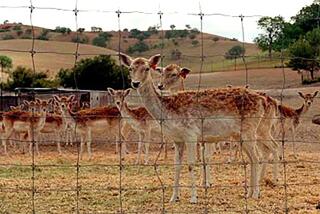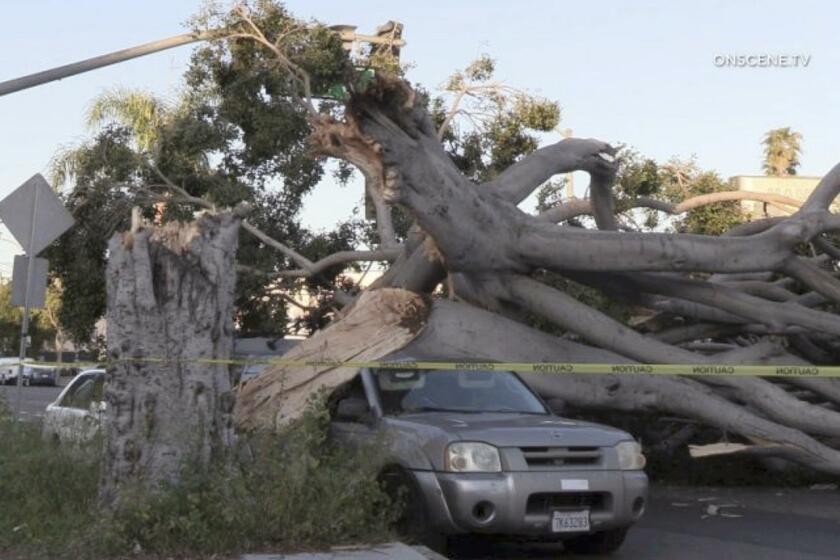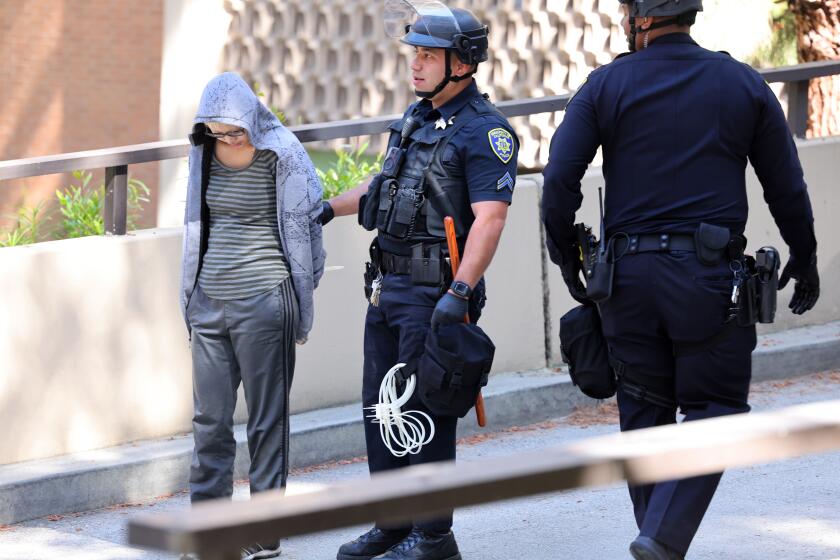Deal Reached to Save Bluff Tops of Newport Bay
In what would be one of the most ambitious land conservation deals in county history, the Irvine Co. has agreed to sell 133.8 acres of the undeveloped bluff tops overlooking Upper Newport Bay to a local environmental group for $55.8 million.
The Newport Conservancy, which negotiated the price and the terms of the deal with the Irvine Co. over the past three years, now must persuade Newport Beach voters to help pay for the uplands, known as the Newporter North and Upper Castaways properties. The Newport Beach City Council will begin to decide on Monday whether to ask voters in November to create an assessment district to raise money for the land purchase. The council would have to act before a July 12 deadline for adding measures to the November ballot.
Sources at the conservancy and the Irvine Co. confirmed the price Thursday. Details of the agreement will be announced at 11 a.m. today at a press conference on the bluff top of Upper Castaways, near Dover Drive.
“This is one of the bigger community efforts. It will be our Central Park, so to speak,” said Newport Beach Councilwoman Jean H. Watt, president and founder of the 200-member Newport Conservancy, which is made up almost entirely of Newport Beach residents.
“I see this as one of the better bargains,” she said. “It will be public open space that everybody pays for--one big public facility available to everyone.”
Upper Newport Bay, known to locals as the back bay, is an ecological gem and preserving its nearby bluffs would keep much of its ecosystem intact. The bay and uplands--one of the largest coastal wetland systems left in Southern California--are home to many protected animals, including the California gnatcatcher.
The $55.8-million price is 19% less than the $69-million appraisal conducted in February, sources at the conservancy and the Irvine Co. said Thursday. The company originally wanted $120 million.
Newport Conservancy and Irvine Co. officials declined Thursday to reveal how long the group has to buy the land or what an assessment district would cost taxpayers.
In the past, the conservancy has said Newport Beach taxpayers would be asked to contribute $60 to $90 per year and other money could come from private donations.
The Irvine Co. had planned to build almost 400 homes on the properties. Because of that, the conservancy was formed in 1990 to buy the land and it began negotiating with the help of the Sacramento-based Trust for Public Lands.
“This was an impossible dream when started,” one conservancy board member said Thursday. “It is (a) very rare and unusual thing for an urban area to have a marvelous back bay like this to enjoy.”
The conservancy modeled its negotiations with the Irvine Co. after a similar, historic agreement reached three years ago to preserve Laguna Canyon. In 1990, the Irvine Co. decided to abandon its plans to build a huge housing development in the canyon and sold 2,200 acres to Laguna Beach and environmentalists for $78 million.
Whether Newport Beach residents are as willing to tax themselves as Laguna Beach residents were in 1990 remains the big question. The conservation group has surveyed city residents but has not revealed the results.
Under the new agreement, the bay-front property would be sold for $417,000 per acre--contrasted with about $35,000 per acre for Laguna Canyon. The land is considered so valuable because it is one of the last stretches of ocean-view open space along the Orange County coast.
“That would be fantastic” to buy the bluffs for $55.8 million, said Dick Zembal, a U.S. Fish and Wildlife Service biologist who oversees Newport Bay issues. “That’s a pretty darned good deal, considering the land. How they pay for it--that’s where creativity comes in. Boy, I wish them luck.”
The negotiations with the Irvine Co. have been largely secret, and the announcement comes as a surprise to county, state and federal environmental officials.
Bob Fisher, director of the Orange County Harbors, Beaches and Parks Department, said the county has no funds to help acquire the land but that it is interested in eventually managing it as an expansion of the existing state reserve. About 1,000 acres of the back bay has already been preserved as the Upper Newport Bay Ecological Reserve.
State funds also are extremely limited, although environmentalists are seeking voter support for a $2-billion statewide bond measure that includes $5 million for helping the Newport Conservancy’s effort.
The 77.2-acre Newporter North property is on the east side of the ecological reserve near San Joaquin Hills and Jamboree roads. The conservancy plans to restore the habitat and add some trails but basically leave the land untouched for wildlife.
The Upper Castaways site, near Dover Drive and West Coast Highway, may become home to athletic fields, bluff-top hiking trails and areas for radio-controlled aircraft and kite flying, Watt said.
“Many people enjoy Upper Newport Bay, but there are not a lot of places in Newport Beach for people to get up and walk around in,” Watt said. “The land is now open, but you must trespass to use it.”
The property is home to about seven pairs of California gnatcatchers, which were declared a threatened species by the federal government in March. It also provides foraging grounds and migration paths for coyotes, which biologists say are vital to the bay’s ecological health since they balance the food chain.
The property, if preserved, would expand and connect a network of wild lands already protected in the Newport Beach-Irvine area and give native animals more room to roam.
If homes were built there, it would pinch the back bay off from other natural lands and wipe out coyotes, leaving unwanted predators such as feral cats to prey on the bay’s endangered marsh birds.
“The bigger the open space parcels we have remaining at the bay, the more of a magnet it is for native carnivores like the coyote and the more functional the bay will remain,” Zembal said. “It would keep the ecosystem intact so the (bay’s) food chain doesn’t collapse.”
Ideally the land, which contains patches of coastal sage scrub used by gnatcatchers and dozens of other imperiled creatures, would be restored to make it more valuable to wildlife, he said.
“The sensitivity of this place dictates low-intensity recreational use, but we would never advocate closing it off to the public,” he said.
More to Read
Start your day right
Sign up for Essential California for news, features and recommendations from the L.A. Times and beyond in your inbox six days a week.
You may occasionally receive promotional content from the Los Angeles Times.






